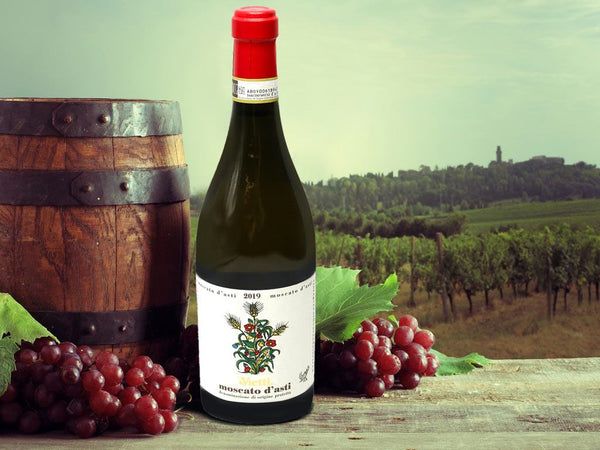Low and No: For Those Seeking Zero or Low Alcohol Wine

No-alcohol wines have existed for a quite a while now, and Bottle Barn offers numerous options for those choosing not to consume an alcoholic beverage, while still enjoying the wine drinking experience. But did you know that there are properly fermented wines that also either naturally or through the winemaker’s choice come with an alcohol of 11% or less? This kind of low alcohol wine features quite a bit less than the 12-16% you will often find in many red, or even white wines.
Those of us who like to drink premium wines will need to reduce our expectations when drinking wines that do not reach 10% by volume, since low-alcohol wine does not have the complexity and length of those with higher grades. It is really difficult to establish the exact balance point at which the minimum alcoholic strength gives the wine sufficient complexity, so bubbles are quite common in some of these wines. Indeed, sparkling wines can be a great category for exploring low-alcohol wine options, as winegrowing often occurs in cooler climes. Cool equals less sugar in the grape and thus lower alcohol in the wine.
Dealcoholized wines are obtained by somewhat, or even completely, removing the alcohol using various techniques, such as evaporation, reverse osmosis, or arrest of alcoholic fermentation, with the aim of removing the alcohol from the wine without greatly altering its flavor. Great progress has been made in this regard, but much remains to be done because, admittedly, a wine without alcohol does not taste the same as a traditional wine. There’s a bit of low alcohol red wine in the market, but most are whites or roses.
There is a difficulty and challenge for these new wines. Can we still call a partially or totally dealcoholized product wine? There is a lot at stake. Few people, especially in Europe today, identify low- or no-alcohol wine as wine. Consumers consider that alcohol remains a core attribute and that this innovation does not belong in the “wine” category, which would lead to the creation of a new product category with its own standards. In general, dealcoholized wine suffers from a lack of market legitimacy (the market remains marginal) and emotional legitimacy (consumers show less interest).
However, there are several factors that could change this perception. In the first place, although it is still marginal, the consumption of beverages derived from dealcoholization represents an emerging trend in consumption practices. Its demand is growing all over the world. The International Organisation of Wine and Vine speaks of minimum graduations to consider a fermented grape drink "wine": 8.5%. Wine is considered to be "the beverage that results from the complete or partial alcoholic fermentation of fresh grapes, crushed or not, or grape must.” Thus, the regulations in both Old World and New World settings have precisely set the degree of alcohol as a constituent element of this product. However, there are wines with as low as 7% from certain regions where it is difficult to reach a certain degree of maturation of the grape, for example due to the very cold climate.
What are Some Examples of the Best Low Alcohol Wines?
Here are some options to buy wine online from the award-winning Bottle Barn curated selection. We will start with “normal” wines that happen to be low in alcohol due to their terroir, traditional style, and/or the winemakers decision making.
First up are some California wines from your favorite wine store California that are reduced in alcohol because the wines still have some residual sugar, which will make them slightly sweet. Some, like Cupcake and Sunny with a Chance of Flowers are intentionally made low-alcohol and low-sugar.
- 2019 Voss Vineyards Napa Valley Sauvignon Blanc, 11% alcohol
- 2021 Sunny with a Chance of Flowers Sauvignon Blanc, 9% alcohol
- 2021 Arnot-Roberts California Rose, 11% alcohol
- Cupcake LightHearted Chardonnay, 8% alcohol
Next up are dessert wines, including what resembles a low-alcohol red wine, but is actually 90% from the white grape Malvasia and 10% Trebbiano (the Vin San Gisuto). These low alcohol wines combine high natural sugar content with some alcoholic fermentation, but they were not fermented to dryness.
- 2009 San Giusto A Rentennano Vin San Giusto, 9.5% alcohol
- 2001 Selbach-Oster Zeltinger Himmelreich Riesling Eiswein (375ml), 9.5% alcohol
Then we have low alcohol sparkling wines, which are so because the fermentation had not concluded when they were bottled. Pet Nats fit into this category as do many d’Asti styles from Italy.
- 2021 Vietti Moscato d'Asti, 5.5% alcohol
- Christoph Hoch Kalkspitz Kamptal Pet Nat, maximum 11% alcohol
Finally, there are the sweeter Riesling wines, which again are made in this style with residual sugar and therefore lower alcohol.
- 2020 Dr. Loosen Dr. L Riesling, 8.5% alcohol
- 2006 Emrich-Schonleber Monzinger Halenberg Riesling Spatlese, 9% alcohol
Bottle Barn has no-alcohol wine as well; here are three great options:
- 2021 Ariel Alcohol Free Cabernet Sauvignon
- Eins Zwei Zero Alcohol Free Blanc de Blancs
- 2020 Hand on Heart Alcohol Removed Chardonnay
Enjoy learning about low-alcohol wines, how they’re made, and the issues involved? Check Bottle Barn’s other wine articles and learn even more!


















Leave a comment